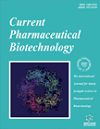
Full text loading...

Radiation targets cancer but risks causing infertility by damaging sensitive testes, especially spermatogonia. This study investigates IR-induced testicular damage and assesses PGZ's potential protective role as a ferroptosis inhibitor.
In this study, Seventy-two BALB/c mice were randomly divided into eight groups: a control, PGZ (10, 20, and 30 mg/kg), IR (8 Gy), and IR+ PGZ (in three doses). PGZ was administered for 10 consecutive days, and mice were exposed to IR on the 11th day of the study. 24 h after RT, the mice's testis tissue was subjected to a series of evaluations to assess oxidative stress and antioxidant parameters, with histopathological analyses conducted one week after IR.
Biochemical analyses revealed that exposure to IR significantly increased ferroptosis markers, while concurrently decreasing intracellular antioxidants GSH. Histological examinations confirmed damage to spermatogenic cells, leading to detachment from the basement membrane and reduced sperm counts. Pre-treatment with PGZ at 30 mg/kg effectively reduced the levels of oxidative stress markers and improved antioxidant levels, demonstrating its potential protective effects against ferroptosis.
The results suggest PGZ can protect against radiation-induced testicular damage by inhibiting ferroptosis and promoting spermatogenesis recovery.
These results indicate that PGZ may act as a protective agent against radiation-induced testicular damage and support the recovery of spermatogenesis following IR exposure. Further research is warranted to explore the molecular mechanisms of PGZ's protective effects.

Article metrics loading...

Full text loading...
References


Data & Media loading...